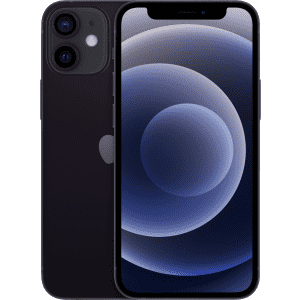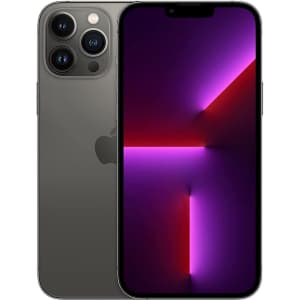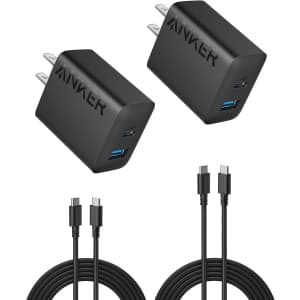
Apply coupon code "SHOPGREEN" to get this price; the lowest we've seen it at. In several colors (Midnight pictured). Buy Now at eBay
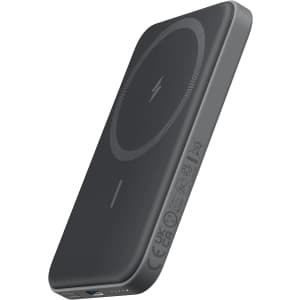
That's $28 off list and the lowest price we could find. It's within $2 of the best price we've ever seen. Buy Now at Amazon
- attaches to phone via magnets
- includes USB-C cable
- Model: A1610

That's a low by $21 and the best price we've seen. Buy Now at Amazon
- Google Tensor G2 processor
- 6.1" FHD+ display
- Model: GWKK3
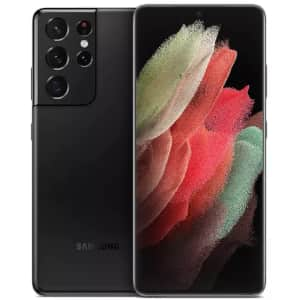
Save on refurbished smartphones from Samsung starting at $59, Motorola from $70, LG from $72, and Apple from $143. We've pictured the Refurb Samsung Galaxy S21 Ultra 5G 128GB Android Smartphone for $309.30. ($16 low) Warranty information varies, but most items are covered under Amazon's return policy. Buy Now at Amazon

That's $50 off and the best price we could find. Buy Now at Best Buy
- 10Hz to 28kHz frequency response
- 23 ohm
- Model: HD 569
- UPC: 615104270978

You'd pay around $500 for it new elsewhere. In Green, Purple, or Violet. Buy Now at eBay
- Qualcomm SM8450 Snapdragon 8 Gen 1 8-core CPU
- 6.1" 2340 x 1080 AMOLED touch display
- 8GB RAM, 128GB storage
- 10MP front camera, 50MP rear camera
- Bixby & Google Assistant
- Android 12
- Model: SM-S901UZGAXAU

Clip the $30 off on page coupon and apply code "7NQKT46L" to save $66. Buy Now at Amazon
- 10 built-in smart-protections
- LCD power display
- hand strap
- Model: YSPB-Z70

Red Pocket uses the same networks as the top carriers, you can choose the network that works best for you. Buy Now at eBay
- 200-minutes
- 1,000 texts
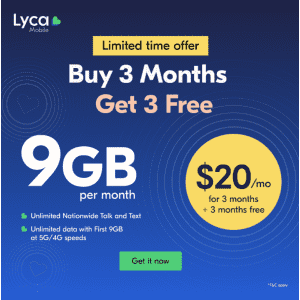
Join the Lyca Mobile family today and enjoy an unbeatable deal tailored for new customers. Dive into a world of endless communication with our special package, offering 9GB of high-speed 5G/4G data every month at just $20/mo for the first 3 months - with an added bonus of 3 months absolutely free. That's right, pay for 3 months and enjoy 6 months of top-notch service. Our plan includes unlimited nationwide talk and text, ensuring you stay connected with loved ones without any hassle. Plus, with the first 9GB at lightning-fast 5G/4G speeds, you can stream, browse, and stay online with ease. We're not stopping there; enjoy the convenience of a free SIM card and complimentary shipping, all for a one-time payment of $60 for 6 months. And for those who love to reach out across borders, relish our bonus feature - unlimited calls to 85 countries, including the United Kingdom, India, and China. Choose Lyca Mobile for a commitment-free experience with no contracts, the flexibility to keep your number, and no credit checks. Connect with confidence on our reliable 4G/5G network and take the first step towards a world of seamless communication. Buy Now at Lyca Mobile
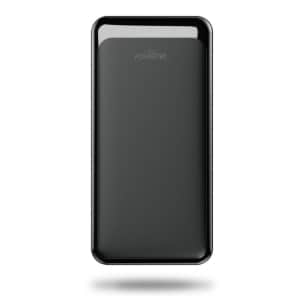
Save $7 off list price. Spend $35 for free shipping, or choose pickup where available to avoid the $6.99 shipping fee. Buy Now at Walmart
- LED power light
- 5V USB/Type-C input
- dual 12W USB output
- Model: 802692

Clip the $3 off on page coupon and apply code "306BCQBW" to save $8. It's available in Black at this price. Buy Now at Amazon
- non-slip silicone pad
- adjustable spring design
- 360° rotating base
- Model: JR-ZS354
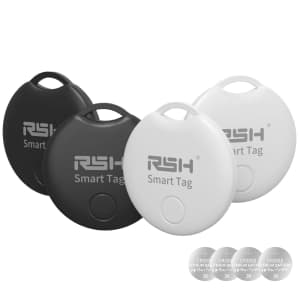
Clip the 15% off on page coupon and apply code "43US75XF" to save $27. Buy Now at Amazon
- 200-ft. Bluetooth range
- works with iOS devices
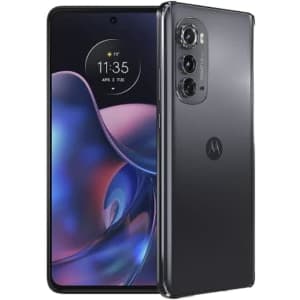
That's $56 off and back at the best price we've seen, down $6 from our mention of a month ago. Buy Now at Amazon
- Android 12.0 OS
- MediaTek Dimensity 1050 processor
- 128GB storage
- Model: PAUJ0008US

That's a tie for the best price we've seen, and a low today by $79. It's available in several colors (Obsidian pictured). Buy Now at Woot! An Amazon Company
- Google Tensor G2 2.85GHz 8-core CPU with Titan M2 security chip
- 6.7" 1440x3120 HDR 120Hz LTPO AMOLED touchscreen
- 12GB RAM, 512GB storage
- 50MP + 48MP + 12MP rear triple camera system with 5x optical zoom & 10.8MP front camera
- Android 13 OS
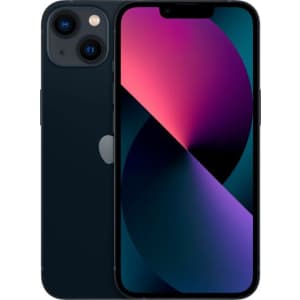
You'd pay around $400 for a refurb elsewhere. It's available in several colors; we've pictured Black. It's covered by a 1-year Allstate warranty. Buy Now at eBay
- A15 Bionic chip
- 6.1" Super Retina XDR display
- iOS 15
- Model: MMM63LL/A

For only $5 per month for the first three months, you get 5GB of data per month, unlimited nationwide talk and text, and even the first 5GB at 5G/4G speeds. Plus, you'll also get a free SIM card, free shipping, and bonus unlimited calls to 110 countries, including India, Mexico, Colombia, Brazil, China, and the United Kingdom. You can keep your number, with no contracts or credit checks, and you can cancel or change your plan anytime. The reliable 4G/5G network ensures you stay connected. Shop Now at Lyca Mobile
How to Shop and Save on Phones and Cell Phones
Cell phones are a ubiquitous part of our lives. Our cell phone are our camera, internet access, GPS, digital organizer, and our alarm clocks.
When buying a cell phone customers are faced with a lot of choices. Decisions need to be made about which cell phone carrier to use, phone to buy, type of service to get, and accessories you need. And we're here to help you with these decision, and help you find the best cell phone deal.
Service Providers
You may already a cell phone carrier, or maybe you’re considering a switch to a new carrier. Either way, the service provider will play a large role in the selection of phones you have to choose from as not all cell phones are unlocked and could be tied to a carrier or network.
The major providers, which operate their own networks, are AT&T , T-Mobile (merged with Sprint in April 2020), and Verizon . Other carriers are known as Mobile Virtual Network Operators (MVNOs), do not own the wireless infrastructure and utilize the cell phone towers of larger carriers. Some of these providers are:
- Straight Talk
- Total Wireless (part of Verizon)
- Tracfone
- Boost Mobile
- Consumer Celluar
- Google Fi
- Cricket Wireless
- Simple Mobile
- Net10 Wireless
Is it better to go with the big carriers? That depends. Consumer Reports surveys indicate higher customer satisfaction with smaller providers compared to the major ones. The smaller carriers mostly offer prepaid plans, which have become very similar to postpaid plans in recent years (see the Service Plans section below). Smaller carriers do offer a wider selection of options for various usage needs outside of premium “unlimited everything” service. However, during times of congestion or peak use, customers of the major carriers will get priority on the networks.
You’ll also want to do a coverage check before deciding on a provider you aren’t familiar with. Check the provider’s website, or do an internet search for the provider name and “coverage map” or “zip code map” to confirm your area is eligible for service.
Service Plans
When considering a cell phone provider, you’ll need to determine if you want a postpaid plan or a prepaid plan. The major carriers offer both types, while MVNOs mostly have prepaid plans.
Postpaid
On a postpaid cell phone plan service billed for after the service is used. You receive a monthly statement and service is continuous as long as it’s paid. When you buy a phone from a carrier and get set up on a postpaid plan, you’ll also get a device payoff plans. In this model, you purchase the phone with monthly payments over a period of 24 to 30 months. This may require a credit check or down payment, and the phone will be locked to the carrier until it’s paid off.
Postpaid plans are generally higher in price compared to prepaid. The types of plans available tend to be more limited and may even include more options than some customers need. However, postpaid plans can also give extra perks (such as free streaming services). There are no worries about running out of minutes or data during a billing cycle, but overage charges are a possibility.
Prepaid
With a prepaid cell phone plan, service is paid for in advance of using it. Buying a prepaid plan means service is available for a limited amount of time, such as 30 days. When that time is up, a refill must be purchased — or auto-fill can be set up to continue service. Phones are often purchased outright instead of through monthly payment plans, although some prepaid providers offer financing with no fees.
Prepaid plan prices tend to be lower and don’t require a credit check. They offer a wide selection of plan types to meet various needs and overage charges won’t apply, but it is possible for service to run out during a billing cycle under some plans. You’ll have more flexibility in switching providers without long postpaid monthly installment plans, although this benefit won’t apply if the phone is financed. Even prepaid phones purchased in full can be locked for up to a year after activation.
Choosing a Phone
Besides choosing the service provider and plan type, what’s left is the phone itself. There are various features to consider, outlined below.
Unlocked vs. Locked
Unlocked cell phones will work with any compatible cell phone carrier. Some phones will only work on GSM or CDMA networks, while others can work on both. Before purchasing, you’ll need to verify the phone will work with the carrier you intend to use. Buying an unlocked phone typically means paying for the phone outright, which is a higher initial expense, but allows for more flexibility in changing providers.
A locked cell phone is restricted to a particular carrier and can’t be activated with other providers. If you see a model listed for a carrier while shopping, you would only buy it if you plan to use that provider. A locked phone may come with options to make monthly payments or get a discount, which can be easier to fit in your budget. However, it will also require using service from that carrier until the phone is paid for.
It’s possible to unlock a phone once you’ve paid off an installment agreement. Or, if you paid in full from a carrier, it can be unlocked after 40 to 60 days for postpaid or up to a year for prepaid. You can contact the carrier to request unlocking; this would allow you to switch to another provider.
There are also options to purchase unlocked phones directly from the manufacturer — such as Apple or Samsung — and make monthly payments without interest and (in most cases) without being locked into a certain carrier’s service.
Operating System
Apple iPhones use iOS, while most other phones use Android and fall under various brands, such as Samsung, LG, and Google. The majority of customers choose one of these, although there are still options out there for Windows phones, Blackberry, or even the classic flip phone.
Using iOS or Android is a matter of personal preference and how immersed you are in either the Apple or Google ecosystem. CNET and Digital Trends cite a uniform, streamlined experience across iPhones and other Apple devices and consistent software updates as strengths of iOS. With Android , it’s the ease of customizing the phone and strong voice assistant capabilities.
Storage
The internal storage a phone has will determine how much space is available for saving files, apps, and media. Common amounts are 32GB, 64GB, 128GB, and 256GB, with higher levels being more costly. To get the right amount, you can consider usage on your current phone and whether that is sufficient — or if you frequently need to clear things out to free up space.
If you can’t afford to go up right now, some smartphones have the option of utilizing MicroSD cards to add storage. Cloud storage is an option as well, with some brands and service providers offering basic plans for free and options to purchase additional cloud storage if needed.
RAM
Random-access memory (RAM) stores the open programs running on a phone. Higher amounts of RAM mean multiple applications can be open at once with quick switching between them.
Processor
The phone’s processor determines its overall performance — whether the phone runs fast or slow. Most phones are multi-core, so they will have at least two cores. These cores each represent individual processing power, although the highest number of cores may only be necessary for mobile gaming and other complex uses. The clock speed should also be factored in — this will be a number with GHz after it. Higher numbers indicate faster performance, even while utilizing fewer cores in some cases.
Screen
The size of a phone’s screen and the resolution are major considerations. Screen size options range from large phones over 6” to tiny 3.3” phones (measured diagonally), and a lot more in between. Customers may prefer the portability and ease of holding a smaller phone in the hand or pocket, while others appreciate extra screen space for heavy reading or video watching.
The resolution is displayed as width × height in pixels. Numbers that are 1280x720 or above are considered high definition. 1920x1080 or above is 1080p or full HD, while 3840x2160 or more is 4K. Before spending more for higher resolution, consider the downsides, including impact on battery life and performance.
Battery Life
There’s nothing worse than a device being on the brink of dying without a charger handy. Many usage factors can affect battery life, but phones with a larger battery will generally last longer. Phones use lithium ion rechargeable batteries that can go up to 5,000 mAh. You can also consider models with fast-charging or wireless charging capabilities, or just make sure to have extra phone chargers or portable power banks handy if the battery tends to run out quickly.
Camera
When considering the camera, look at the megapixels or MP number as a basic indicator of image resolution. To delve into more specs, check out PCMag and TechRadar for their top picks for the best phone cameras.
Reviews
To further help with your phone purchasing decision, you can check out reviews at sites like CNET or PCMag . Also, consider checking out the customer reviews at retailer sites to consider other people’s experience.
Frequently Asked Questions
How can I get a deal on my next cell phone?
Here at DealNews, we list the best phone deals we find, along with special offers for apps and accessories. You can shop specific categories using the links below:
We cover price reductions on unlocked models, as well as top promotions from major service providers, like AT&T and Verizon . Deals from carriers are always available, but keep in mind that they often require a new line of service. This works well for new customers, but existing customers may not be able to take advantage of these offers if they don’t need another line.
Besides the major carriers, various retailers and manufacturers sell handsets that are unlocked or compatible with service providers. These stores can offer their own sales and deals, so check around for pricing once you have a particular model or two in mind. We list deals on phones and accessories from Amazon , Apple , Samsung , Best Buy , and more stores. As mentioned previously, buying direct from the manufacturer can give no-interest financing similar to carrier deals while keeping the device unlocked in most cases.
We also cover refurbished phone deals , which can be an option to save money compared to buying new. Stores like Apple offer like-new models at a discount and a one-year warranty. However, with unfamiliar sellers, be sure to review the warranty policy and item condition details carefully. Then compare the price of buying new to be sure the savings are significant enough to make it worth doing.
When is the best time to buy a new phone?
As we mention in our article When Is the Best Time to Buy a New Phone?, November and December are great months to check for smartphone discounts. Specifically, deals on the latest flagship phones are often seen around Black Friday and Cyber Monday.
